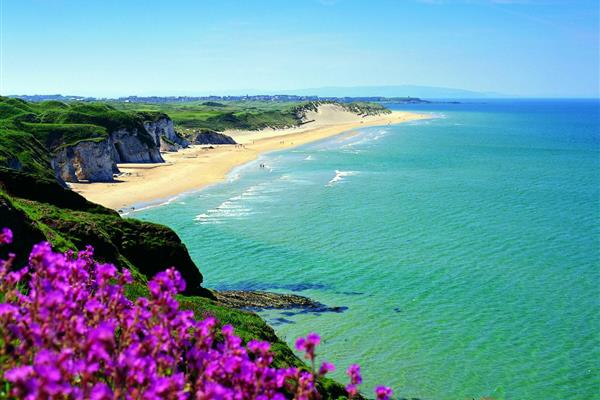The top 5 ways in which Ireland is becoming a more climate-friendly country

While Ireland doesn’t have the best reputation in response to climate action like other countries in Europe, there are certain measures in place to make the Emerald Isle a more climate-friendly country.
Climate change is a real and serious threat to the future of the planet. Ireland is one of the 186 countries around the world that has signed and agreed to the Paris Agreement, a legally binding accord for countries dedicated to limiting global warming and decreasing the risk of climate change on the planet.
As such, Ireland, like many other countries around the world, has a duty to protect the environment in any way that it can.
Be it government measures or the acts of individuals, let’s take a look at the top five ways Ireland is becoming a more climate-friendly country.
5. Coastal Erosion Scheme
Ireland’s coastlines are under threat of coastal erosion due to climbing tides caused by climate change.
A 2022 report found that coastlines around the country could rise by up to 30 cm by the year 2050.
In turn, this will lead to an increase in serious flooding across Ireland. Ireland’s beaches, including beaches in Northern Ireland, are all affected by coastal erosion.
As such, to combat this, Irish Rail has commissioned Jacobs, an engineering and construction company, to conduct detailed design and planning services to combat the risk of coastal erosion on Irish shores.
The East Coast Railway Infrastructure Protection Projects (ECRIPP) programme will defend long sections of the 168 km stretch of the Dublin to Rosslare coastal railway line from erosion and flooding for the next 100 years.
The line runs from Dublin via Wicklow and Wexford to Rosslare, the primary southeastern terminal for ferries to France, Spain, and Wales.

4. Climate Action Act
Ireland signed its Climate Action Act into law in 2021. This created a legally-binding framework for achieving international and EU climate targets.
The law seeks to create a path to net-zero emissions by 2050 as well as a 51% reduction in greenhouse gas emissions by 2030.
As such, the government will try to reach these targets through carbon budgets. However, these budgets have nothing to do with money. Rather, they set out how much carbon Ireland is allowed to emit in a five-year period.
Ministers in different departments of the government have their own targets to meet and reduce emissions. Plus, local authorities also create their own Climate Action Plans.
See more: The end is nigh? Climate, nuclear crises spark fears of worst
3. Transport
In cities throughout Ireland, public transport is becoming more readily available for locals and tourists alike.
In recent years, city bikes have made exploring the city handy, easy, and, better yet, having no effect whatsoever on the environment. Furthermore, there are now several e-bike stores throughout the country where e-bikes are readily available to purchase or rent.
Ireland has set out a goal to have more than one million electric vehicles on the roads by 2030. This comes as part of the Irish government’s response to a climate protection plan.
According to the government in Ireland’s capital city, 845,000 of these electric vehicles should be passenger cars, 95,000 vans, and 1,500 electric buses. Currently, there are around 45,000 electric vehicles registered in Ireland.
With transport being a huge contributor of C02, this is one of the best ways in which Ireland is becoming a more climate-friendly country.

2. The Rural Environment Protection Scheme (REPS)
REPS was introduced in Ireland in Ireland in 1994. The objective of the scheme is the conservation of the natural features on farmland by voluntary grant schemes.
Ever since it was implemented, it has remained one of Europe’s best environmental stewardship schemes.
In turn, farmers in Ireland are required to comply with a five-year environment plan in order to qualify for an annual payment co-funded by the EU and the Irish Exchequer.
Quality assurance is huge in promoting food and horticulture and provides the platform for consumer promotion of quality products.
Since 2011, certain schemes have included the objective of assessing a farm’s carbon footprint under the auspices of the Carbon Trust in the UK.
Today, only 11% of Ireland’s land is in forestry. This is a small percentage in comparison to a European average of 40%.
- LIFE funding for Ireland
LIFE is the EU’s original funding programme for nature, the protection of biodiversity, and the fight against climate change.
Funding of €5.4 billion for the programme in Ireland between 2021 and 2027 will include funding for energy efficiency and renewable energy projects.
Some of the LIFE funding already implemented in Ireland include Life Emerald. This project strives to improve air quality information and to raise awareness for the topic of Irish air quality.
LIFE IP Wild Atlantic Nature included a €20 million nine-year EU-funded project to conserve and protect the blanket bog habitat in the northwest of the country.
With measures like this already in place and continuing, Ireland is ensuring more environmentally-friendly measures every day.







